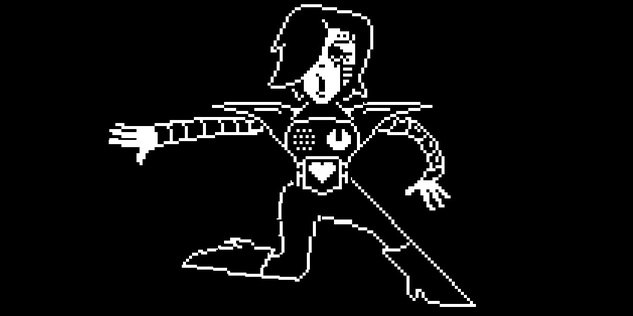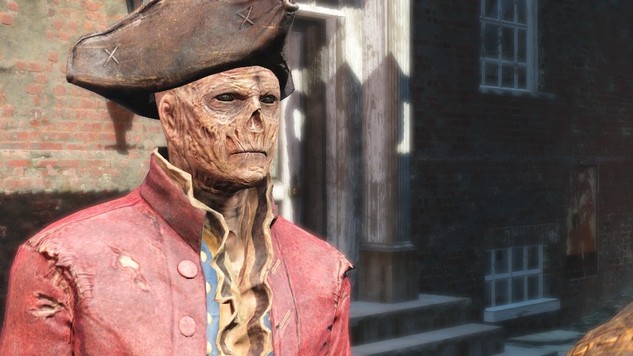
When we talk about sex and sexiness in games, the discussion often slants into categories. Who is sexualized, how they are sexualized, and why they are sexualized becomes a game of “good” and “bad” representation, as if all characters in stories exist on a binary. This isn’t just a fault of more reactionary critics, but a problem that manifests in many lines of critical game thought.
As with most binaries, the realities of the situation are not as clear-cut. Under the conditions of our patriarchal society, men—specifically those who were assigned male at birth—have a degree of privilege when it comes to “sexy” depiction onscreen. More specifically, they aren’t critiqued on a character level to the degree that non-male characters would be.
This has a lot to do with what we mean when we say “sexy” more than anything unique to games per se. Female/feminine sexualization is a topic that has been covered at length by better writers than I (Feminist Frequency’s Tropes Vs Women series being one of the highest-profile examples) but markedly fewer critical looks at sexualization of male characters.
“Male sexualization” often is a dog-whistle term for people insisting that men have it “just as bad.” I can assure you, I don’t side with that viewpoint. Secondary disclaimer: I’m flitting between “male” and “masculine” throughout this. I’m working through a very mainstream, very heteronormative lens here, because that’s the environment of most games, for better or for worse.
So let’s look at a few of the more common manifestations of sexualized archetypes for male characters in games, while trying to avoid the pitfall of “good” or “bad” representation.
Male Sexuality as Power Fantasy
The most common manifestation of male characterization in modern games is the Muscle-Bound Warrior Man trope. It’s not hard to find—plenty of games following in the sword ‘n’ sandals, Conan The Barbarian tradition give the player control of some hyper-brawny, scantily-clad warrior. The most common example is probably Kratos, the main character of the God of War series.
Kratos—whose name literally translates to “rule”—is an interesting example for many reasons. Within the lore of the game, he is “sexy.” There is an implication within his numerous sexual encounters of desire by the other party. Generally, the “other party” ends up being one or three scantily-clad Roman goddess-types. I’ll be returning to Kratos a lot—he’s a textbook example of the power fantasy at play.
It’s Kratos’ agency that sets him apart from just being an object of desire, something not seen in many gratuitous examples of female character sexualization. It’s framed as a power fantasy, an aspirational figure. His sexual exploits are not for the pleasure of the viewer to see Kratos sexualized, but to serve as an avatar for the player’s power within the gameworld—sex becoming another realm of power that Kratos can conquer. Any sort of objectified sexuality that Kratos is granted via his physicality is overruled by his stoic hypermasculinity and position within the game—he is first and foremost a creature of agency, built to push the plot forward.
This is ultimately the problem that is seen in many games that attempt to depict the main male character as an object of masculine sex. Most often, this manifests as a sort of conflation of power fantasy and sexual fantasy, resulting in muscle mass and not much personality.
The lack of personality is meant to allow the character to be inhabited more closely by the player, but what usually happens is the character is only seen as pure, intoxicatingly bland, and bizarrely sexually forward. This, among other things, can be attributed to the assumed straight, male player, whom the developers or publishers would be seeking to not make “uncomfortable” by imbuing their character with incongruent traits.
Male Sexuality as Gender Performance
There’s a curious thing that happens with sexuality in the heteronormative public eye. “Sexy” as an attribute is one that we apply to femininity almost exclusively, as “masculinity” is viewed to be in opposition to the common descriptors of “sexy.” Masculinity revolves around being in control, or at least not being submissive. Being in power, not being on the receiving end of power. Under a heteronormative paradigm, “sexy” becomes incongruous with outward masculinity.
When the masculine is coded as being in opposition to femininity, male characters that are coded as “sexy” often do so by performing femininity (in some fashion). Traditionally-coded “sexy” male characters are “sexy” via their vanity, their attention to personal attire, etc. In this way, their status of being “sexy” is founded on their ability to perform as an object of sexual desire (this is also often queercoded and/or played as a joke).
The thing with male bodies is that when you objectify them, or play them up as objects to be desired, you are working against the traditional understanding of how gender is supposed to be performed.
Michelle Clough, in her GDC 2014 talk “Fewer Tifas, or more Sephiroths?” brings up the history of the “bishounen” character archetype in East Asian (specifically Japanese and Korean) games. “Bishounen,” built on a representational history of male characters in many works of East Asian literature, literally translates to “pretty boy” from Japanese, and is most often characterized with the same traits of gracefulness and charm that are seen more often in Western games as feminine.
Examples of this sort of performative sexuality worth mentioning include Mettaton from Undertale, Vega from Street Fighter, Maxi and Raphael from Soul Calibur, and Sephiroth from Final Fantasy VII. Each of these characters embody a distinctly “unmasculine” outward presentation, and their interaction both with other characters and with the gameworld mark them as different. They move differently, they speak differently.
Male Sexuality as/within Fan Interpretation
For every Kratos, there’s a Garrus, or a Hancock, or a Dorian—characters that may not exhibit traditional notions of masculine physical attractiveness, but for whatever reason happen to strike a chord with players or fan communities. A perusal down any fanfiction site will find you the most “popular” characters within a game’s canon, and often there’s an abundance of characters that were not necessarily coded as such within the game itself.
This tends to be slanted toward characters who are particularly suave or emotionally open—something that you don’t see in a Kratos or Marcus Fenix. Also, curiously, these are not often the player characters in these games. This isn’t particularly revelatory, but side characters get more space to show their personality—characters like Garrus Vakarian quickly became fan favorites due to their likeable personalities and easily-fantasized-about demeanor.
These characters flourish because they have something that isn’t often afforded to player characters: limits. They aren’t always given the largest amount of power and control within a story (which makes sense, as many of them are secondary to the major plot of games) and they have more opportunity to show off their personality via interactions with the player and other characters within the game.
Masculinity in games is more tied to agency than it is to performance. Since we associate “correct” or normative masculinity with power and with power over one’s environment, it’s frankly hard to make that same character seem “sexy”: their limitations are hard to find, and their personality is only seen in interactions with other characters.
If games are to be interrogated for the sexualized depictions of characters, it is important to take in more to “sexualization” than simply their physical features, but the way that they move within the game and their interactions with other characters.
A big part of the reason why there appears to be less attention given to creating believable and fantasizable male characters in games is a facet of being a part of a patriarchal society. Mattie Brice brings up in her piece “On Men’s Sexualization in Video Games” that even in games that portray a nude male body, overwhelmingly this is played for humor—as even the concept of a sexualized male body would be a joke if put in a game.
This isn’t unrelated to misogyny either. The positioning of male bodies as subject and female bodies as object is the core tenet of the idea of the “male gaze”, or, as Kate Cox re-contextualized it for video games, the “gamer gaze”. Consciously sexualizing a male body goes against the core concept of catering toward a presumed straight, presumed male gamer.
The three types of examples I brought up are not comprehensive, nor are they meant to be viewed as such. They’re broad and vague. In reality, just as I mentioned at the beginning, representation doesn’t usually slot into a small number of discrete categories. In addition, what one person considers sexy might be completely antithetical to what another does. Ultimately, the key is to write good characters—and there’s no shortcuts to that—but being conscious of how games can reinforce or subvert normative representation will always help.
Dante Douglas is a writer, poet and game developer. You can find him on Twitter @videodante.


